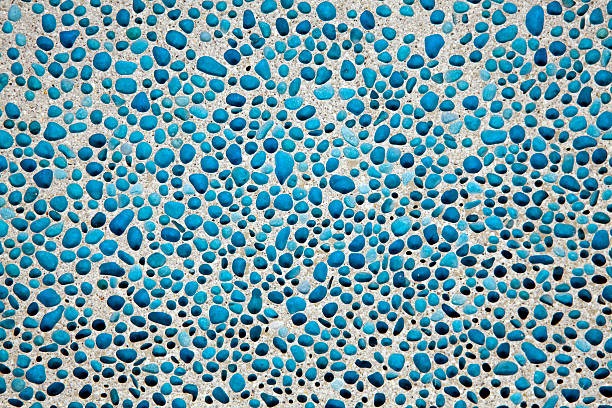Ceramic tiles come in a wide range of styles and designs. They can add a unique look to your home a special touch. But, how exactly are they created?
The most popular method of fabrication uses dust pressing, in which huge hydraulic machines press moist powder. This gives the tile gach lat nen 100×100 dry strength and limits warpage as it dries. Prior to firing, the pressed tile can also be decorated with an embossing engobe.
Manufacturing Process
In a beautiful video created by Ceramic District, we see the natural raw materials of tile production being sucked up by excavators, then poured into huge hoppers. The clay minerals that are resulting and other additives are blended with other ingredients, then crushed into a powdered form ready for the next step. These materials can now be able to be combined with mineral additives, thanks to the research and development. This reduces the energy consumed in the firing process.
To ensure complete homogenization, the material is then weighed out and dosed. Dry or wet grinding can be performed using a variety milling equipment, such as ball mills and mullers. The grinding process reduces the size of materials to a level that is easily pressurized.
When the powdered mixture is prepared, it is then made into a ball to eliminate any air left and create a dense, even consistency. The kneading process is essential to create tiles with a smooth and even surface that is resistant to scratches and stains.
Dust pressing is the most popular method of fabrication. It is a process where giant hydraulic presses are used to make the tile’s moisture flat into tiles as large as a meters square. The shrinkage that occurs during the drying process is eliminated and the result is a straight and flat product. Engobes and glazes can be added to these tiles prior to the final firing.
Glazed Tile Production
Clay minerals are the main raw material that is used in the making of glaze ceramic tiles. Other natural mineral additives like feldspar, for lower firing temperatures are also available (Ceramic Research Company). The main component of clay is a hydrous aluminum silicate which possesses a plastic quality that allows it to be shaped and molded into the desired shapes. Glaze and pigments are the primary raw materials that decide tile color, pattern and design.
The glazed tile manufacturing process starts with the initial grinding of the raw materials. This can be done using an muller or a roller mill which uses a squeezing motion between steel plates or a rotation between steel cones in order to reduce large lumps into smaller pieces. The raw materials undergo drying to eliminate the moisture.
The second step, once the body slip has dried is to apply the glaze on the surface of the tile. The glaze is made from an insoluble mixture of a glass derivative called frit, and dyes that are colored. The glaze is fused to the surface of the tile using a high temperature kiln.
To ensure the uniformity and high quality of the glazed tiles they need to undergo several additional processes. It must be polished to provide a beautiful finish and it must be meticulously inspected for any defects before being packed to be distributed.
Roller Kiln Tile Firing
Ceramic tile’s strength comes from clay which is then formed after being fired, glazed and then shaped. Despite the fact that various materials, manufacturing techniques and techniques are employed to make different kinds of ceramic the ceramic tiles all have a common characteristic. This is their porosity, or water absorption and their unglazed back.
After a dust-pressing process on large hydraulic presses, and the pre-firing process, large quantities are loaded into massive rolling kilns. The new kilns are groundbreaking due to their speedy firing process and eliminate the warping that is caused by shrinkage in firing. In reality, it was the technology in the kilns that made it possible for tile to move from wall tile only to floors and walls in homes and commercial buildings, hotels and other spaces.
The tile goes through an extreme temperature treatment in the kiln. If the tile is going to be glazed, it will go through a glaze phase (step 4.). The tiles are then coated with a thin liquid glaze and dried at high temperatures under a controlled atmosphere.
Kilns can be heated by electricity, natural gas or oil. The temperatures of the kiln could exceed 2,500°F, based on the fuel. To ensure that the tile stays in its shape during heating the producer can put conveyor belts or other devices in the kiln, which allow the tiles to move around.
Clay preparation for tiles
Step 1 begins by mining clay minerals, and then transforming them into sand. Sand is then mixed with natural minerals, such as feldspar. This assists in lowering the firing temperature and chemical additives to shape. The resulting mix is ground or crushed to produce smaller lumps. It is possible to use a muller, or hammermills to do this. The use of steel hammers could cause damage to terracotta clay.
After the clay is at the right texture to create tiles it’s time for the next steps of ceramic tile making. The first step is to create and sketch the design of the tile. Templates and sketches can to make the process simpler particularly for big-scale tiles for artistic and home decor projects.
To eliminate air bubbles, the clay slabs have to be shaped, wedged and then shaped to the required dimensions. Once the tiles are shaped they should be completely dry between drywall sheets to avert warpage. The most difficult part of the process this stage. Technicians constantly fight against pinholes. One pinhole could ruin a whole production run. The tiles should be flat throughout drying and firing in the kiln is crucial.
Once the tiles are prepared, they can be coated with glaze. The glaze can either be applied by spray or pouring onto the tiles. The glaze can be created with glass derivatives and colored dyes. The firing of ceramic tiles is the final stage of the process. The kiln is heated to approximately 2000 degrees Fahrenheit.




